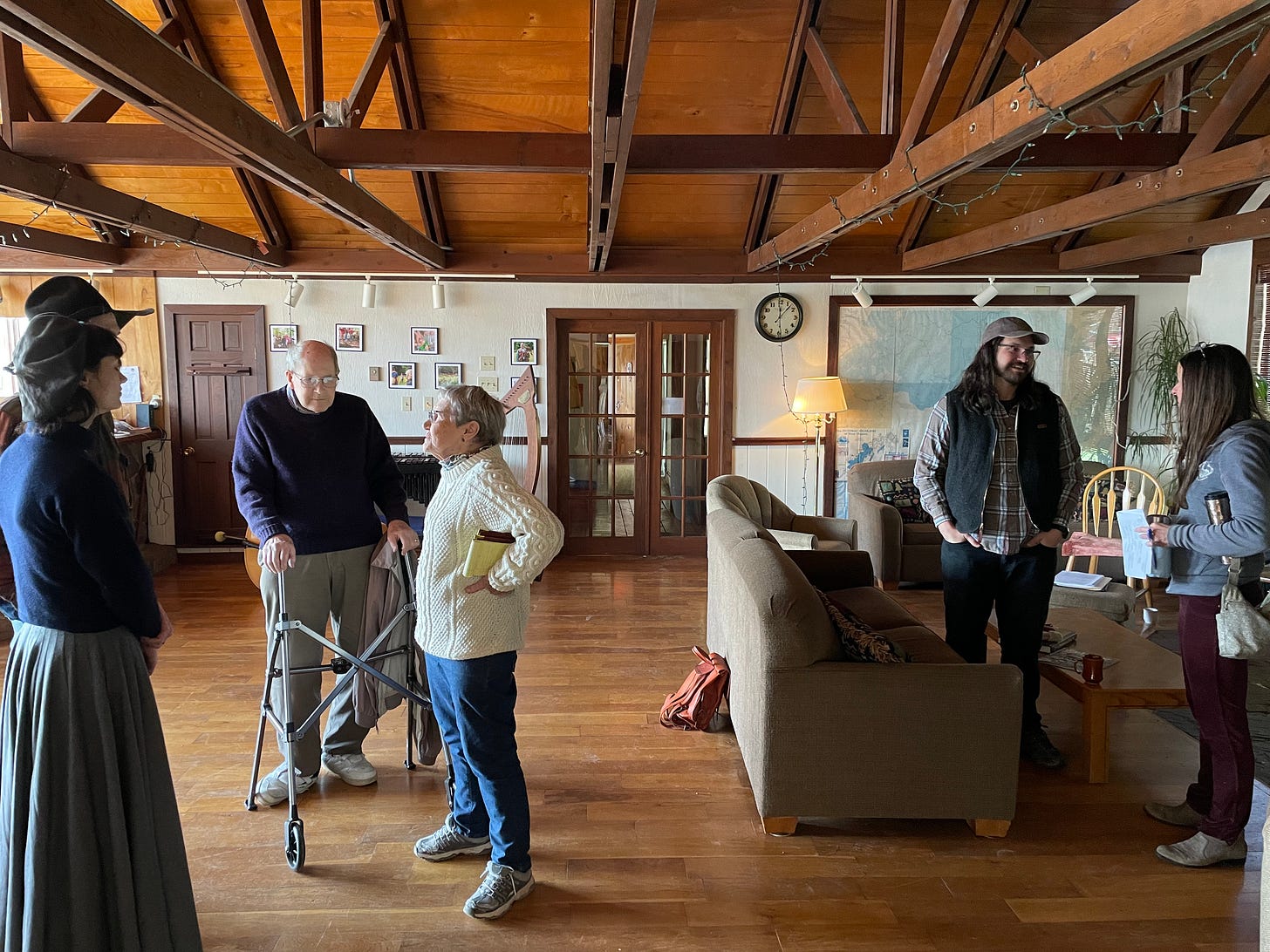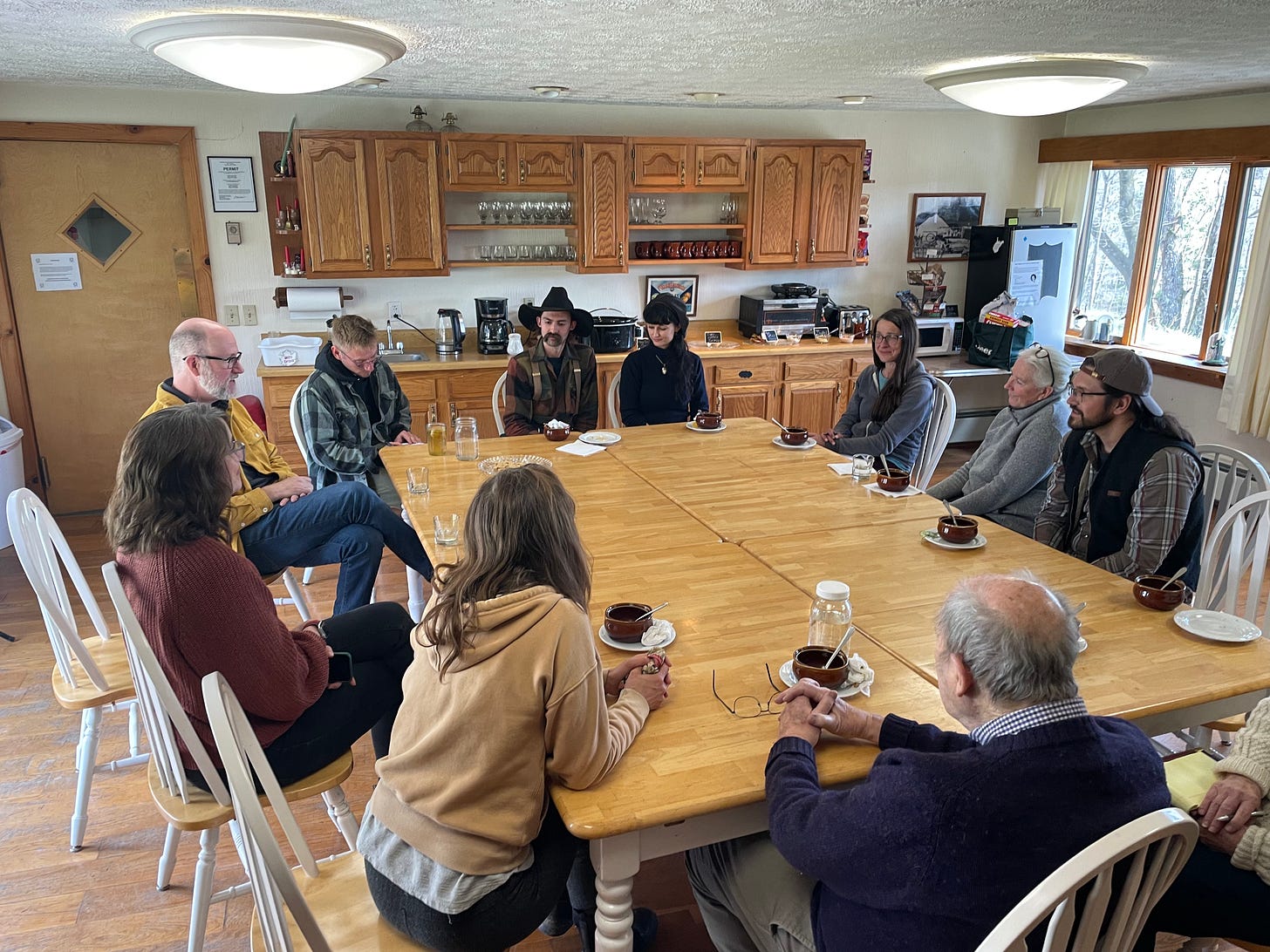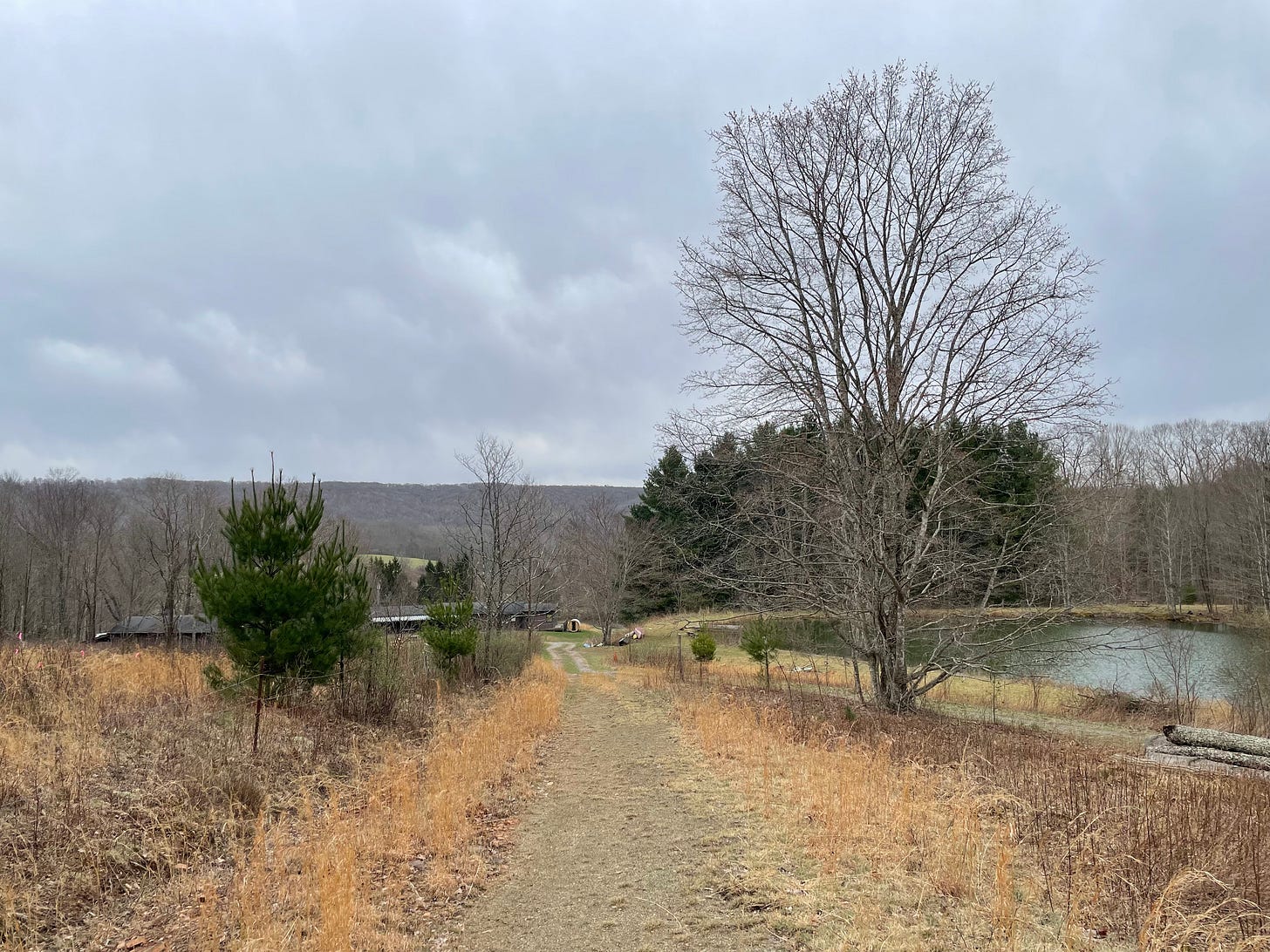Visiting the Yew Mountain Center in West Virginia
Where we listened to the forest, the wind, and to each other.
At the end of March, I spent a few days in Pocahontas County, West Virginia. I was invited (along with my wife Jen and son Henry) to the Yew Mountain Center, a botanical sanctuary and community center in the Appalachian mountains. While there, my job was to share my experiences with the Forest Listening Room project with local residents to see if it might contribute to their own community organizing efforts around history and place. (You can learn more about the Forest Listening Rooms project here.)
Lately, I’ve been increasingly curious to see how Forest Listening Rooms works outside of its original contexts (which are the communities and places of the Wayne National Forest in Appalachian Ohio, where I have worked for the past thirteen years). Would it work elsewhere? Would new communities find it of use and meaningful? Here, Pocahontas County was a place I had never been to, and home to a community I had never met. I knew from the beginning I had to rely on their generosity and knowledge to make Forest Listening Rooms work.
We arrived well into the evening. It was dark, the wind was fierce, and the GPS led us onto increasingly remote roads: first the yellow paint on the sides of the road disappeared, then the stripe in the middle vanished as two lanes became one, then the road became gravel, then a fog set in, and then we found ourselves suddenly face to face with a field of cows with eyes glowing in the dark against the headlights (“demon cows,” my son Henry informed me). In addition, fallen branches blocked the snowy roads, the switchbacks were pretty much 180 degrees (and steep), death-wish frogs heroically leapt across our path, and a lone and frightened rabbit decided to hop in front of the car for a quarter of a mile before veering off into the brush. I started to wonder if I made the right decision to make this trip so late at night.
But it all turned out ok! After we arrived we were greeted by a friendly groundskeeper, and a warm and welcoming building. Even in the dark, I could identify the rush of a nearby waterfall as my ears adjusted to the lack of traffic and other city sounds. Inside, Henry immediately found and started playing a host of instruments: piano, double bass, xylophone, dulcimer, harp, guitar — it put us all at ease after the (sort of) harrowing drive.

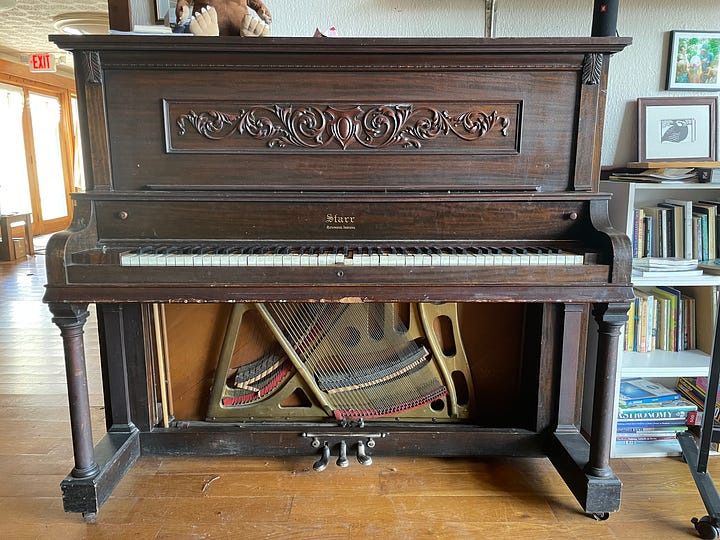
The next day, about ten or so nearby residents arrived in the morning. We introduced ourselves. I shared my work and story, and then talked of the Forest Listening Rooms project. I also left space for the others to talk; from the beginning they had interesting and strong personalities, and were all very welcoming. Each person had a deep sense of the land and its history, and felt a pride to be there, to share their stories.
We ate lunch together, prepared by a local resident. This was yet another opportunity to get more comfortable with each other. To my mind, chatting and splitting off into one-on-one conversations is also important work, and can’t be underestimated. The food was great, too (also important).
We then went on a short soundwalk together. Earlier, we had tabled the idea; the wind was so strong that we were advised to not walk through the woods. In the end, we decided to stay in the open fields and away from the danger of falling limbs and trees (this turned out to be a good idea, since we later saw a tree fall across the field). We walked a short distance up to a small pond on the property.
After arriving at the pond, we listened in silence for 15 minutes. Honestly, I am surprised we made it that long! The wind was intense, powerful, unpredictable, and a bit frightening. It came in swirls over and down the hills around us. We could see it! Gusts moving across the tree tops and down toward us. More than once the wind was so strong it took my breath away. I felt a palpable sense of vulnerability.
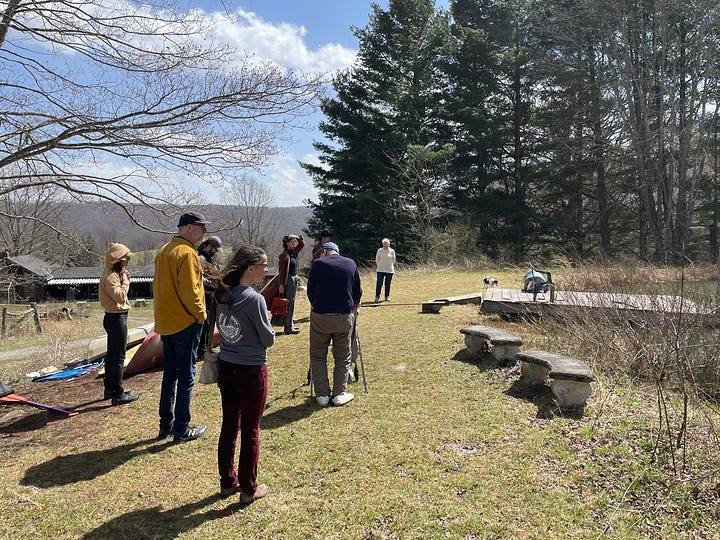

The pond was surrounded by forest, with trees leading all the way up the side of the mountain. It became a mirror of the wind. Like the trees, the wind’s patterns wrote themselves on the surface of the water: rustles, circles, violent waves, shimmers, all racing to and fro. It moved me very much. I’ve never seen anything quite like it:
We managed to talk with one another about what we heard, about the wind, and about the participants’ experiences of place. But we also decided that the wind was a bit too unnerving, so we headed back to the main building.
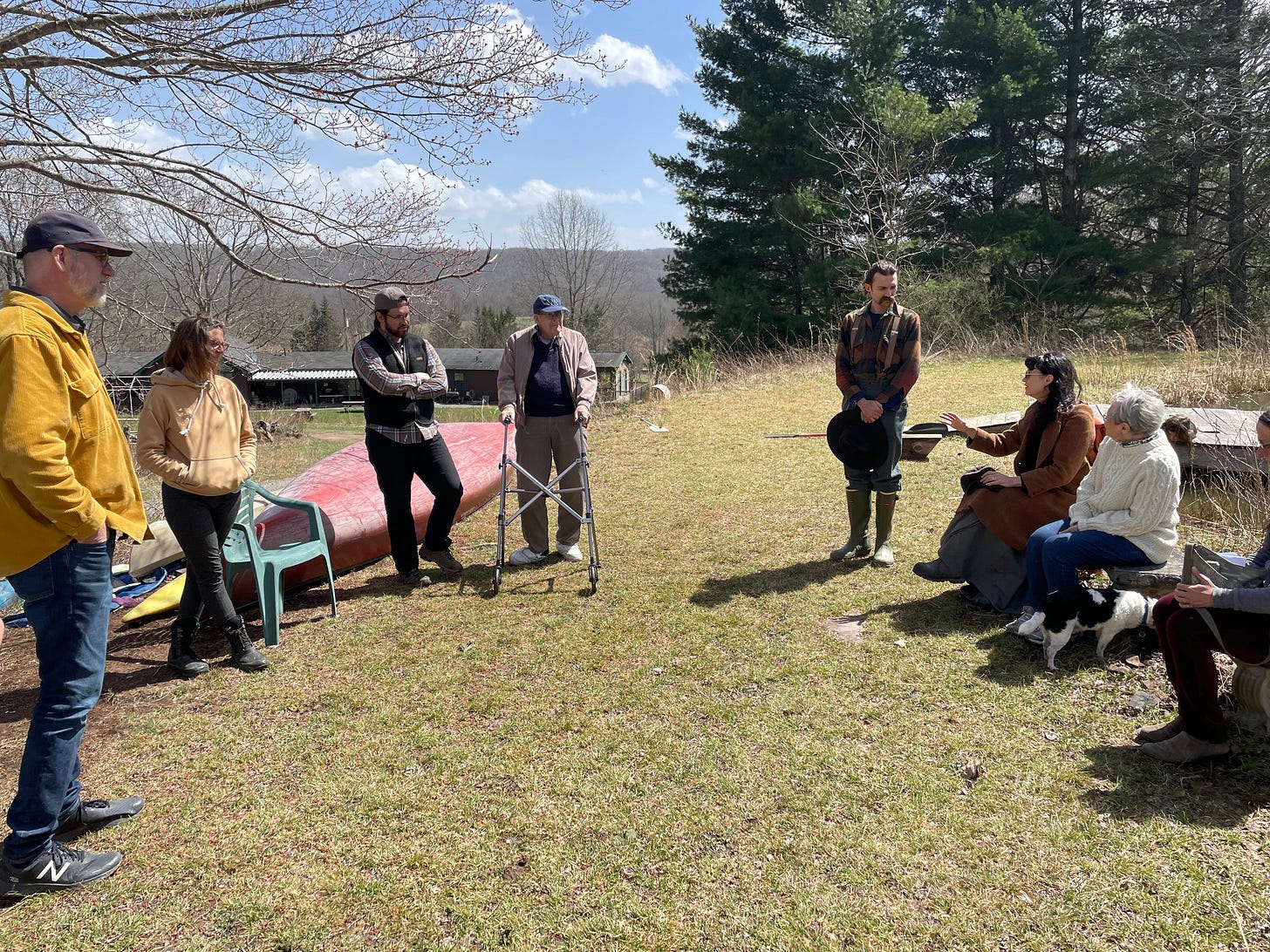
Inside, we talked until 4:00pm. This was not a place for me to impose Forest Listening Rooms’ structure and ideas on them. Rather, the goal was to share how the project works, and to have a common experience listening to the land together; to bring residents together to talk and listen to each other; and to see if my project might loosely inspire them to create their own local projects around place, history, and environment.
There was no shortage of ideas. Everyone excitedly told stories of their work (Snowshoe Mountain Ski Resort, a local opera house, homesteading, etc.), the places where they live, and of their families (personal histories that included both new residents and those whose families had lived in the area for generations). They shared ideas so enthusiastically that at one point a community member leaned over to me and asked, “are you sure this is what you expected to do while here?” I responded by saying that this was exactly what I had hoped would happen. I had no agenda, and had only planned on being open to what might come out after having the shared experience of listening together to the mountain, pond, and wind.
In truth, I didn’t do much here. Experiencing such strong wind earlier had me thinking about vulnerability, and what it does: to be vulnerable is to be open at the risk of feeling embarrassment or shame, but is also the only way to make connections with others. It is a guiding principle behind Forest Listening Rooms, where the natural environment around us encourages us to open up to others. In fact, to my mind the very definition of listening is to be vulnerable and open.
So, I mostly listened (I had talked all morning, after all), and offered occasional insights, made connections, and asked questions to gently guide the discussion. The group decided to apply for new local grants to move forward with a local project that incorporated historic sites, sound, and informational kiosks. I could see their stories slowly taking shape in front of me; organizing from abstract ideas to something more concrete.
The next day, we traveled to Knoxville and to the Big Ears Festival. Jen opted to work at the hotel while Henry and I saw shows: Bill Frisell, Appalachian films (of my pal Tom Hansell and others), Caroline, Ben Solee, the Knoxville Symphony. We even watched Evan Ziporyan play music from one of my former teachers, the British composer Steve Martland (Steve passed away ten years ago, and hearing his music again was deeply affecting; it was a reminder how a live performance can touch in ways we can not anticipate).
Henry loved it. He loved seeing the music, walking among the historic buildings, taking note of the acoustics and atmospheres of each performance space and hall, watching musicians wander around as they shifted between performer and audience member — he loved all of it. I’m pretty sure he was the only 14-year-old there, eagerly taking it all in.
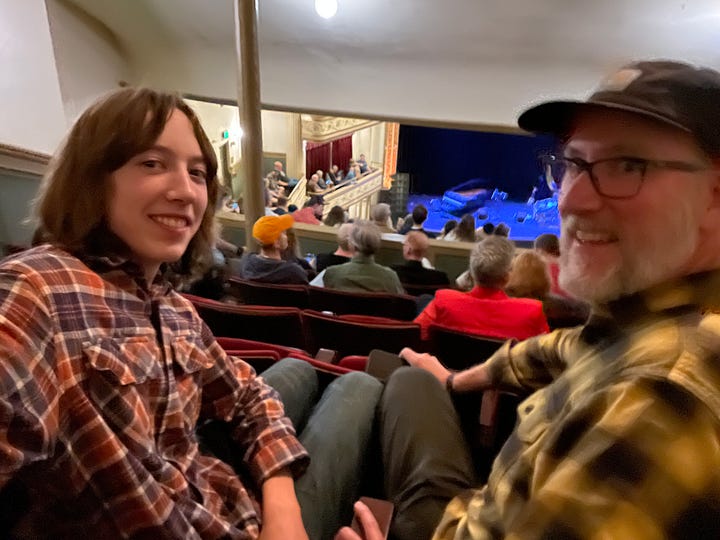
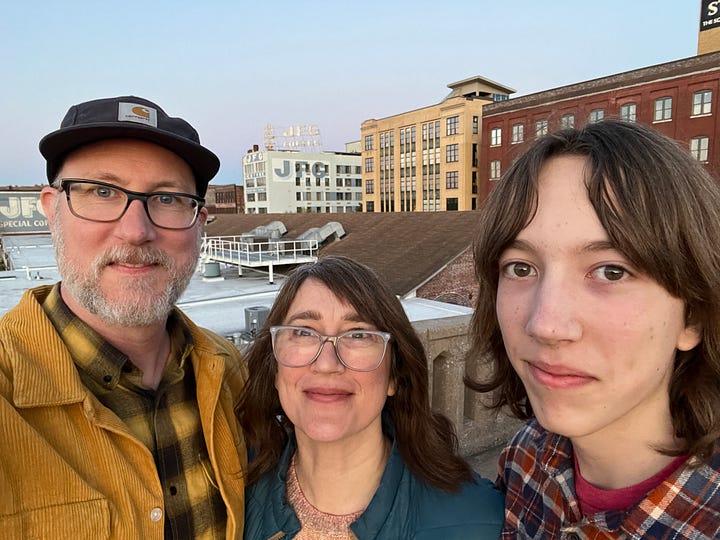
PS. If you would like to incorporate Forest Listening Rooms in your community, please reach out to me (brian@brianharnetty.com). I would love to share the resources and knowledge I have, or even visit!






